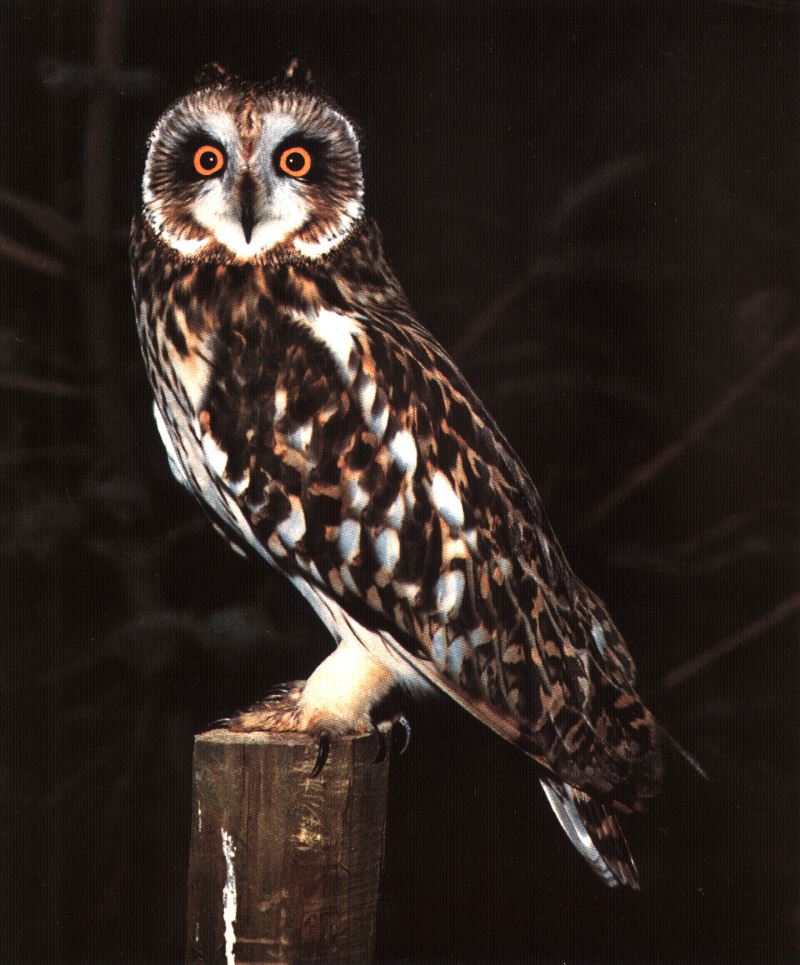Introduction to Owls
Owls are a world-wide order of birds known as Strigiformes and the 216 species range in size from the tiny, sparrow size, Elf Owl to the Eurasian Eagle Owl which has a wing span of nearly 2 metres and can weigh almost 5kg. They are a group of predatory birds, characterised by large forward facing eyes surrounded by a facial disk of short stiff feathers and an upright posture. A large proportion of owls are nocturnal. They occupy an equivalent niche to the diurnal birds of prey such as hawks, falcons, eagles and buzzards but they are not actually related. The resemblance to the day time birds of prey is an example of convergent evolution, where both groups have independently evolved several features such as the hooked beak and talons. Owls are all very closely related to each other, much more so than, for instance, the diurnal raptors which include birds as dissimilar as vultures, secretary birds, falcons etc. Even so, owls are separated into two fairly distinct families.
The first family is the Tytonidae which is made up of 17 species of barn and grass owl, and one species of Bay Owl. Members of this family are quite distinct from other owls and possess several differences. The most obvious external ones being the heart-shaped rather than round facial disk, the longer skull and beak, longer legs, longer and more pointed wings and a forked tail. Grass Owls come from Africa, South East Asia and Australia and are very similar to Barn Owls but have longer legs.
All of the other 198 owls are in the family Strigidae: The collective noun for owls is a “Parliament”.

All owls are predators and the size of the prey is generally reflected by the size of the owl. The Elf and Pygmy Owls prey on a variety of insects, spiders and other invertebrates, although, some are quite voracious and can take birds as large as themselves. Eagle Owls, at the other extreme have been known to take such formidable prey as Golden Eagles and a Roe Deer of 13kg as well as foxes, herons, domestic dogs and there is apparently a report of a large Siberian Eagle Owl taking a ¾ grown wolf!
Hunting, normally, is performed in two different ways. The first is perch hunting, where the bird literally sits and waits on a suitable perch until a prey item is located. The other technique is flight hunting where the owl slowly quarters the ground from a low altitude, looking and listening for prey and diving down when food is detected. The length of the wings is normally a good indication of the preferred method of hunting - short wings for perch hunting and long wings for flight hunting.
Most owls are opportunists and virtually anything that moves is fair game. Some species are more specialised feeders, in particular the Fish and Fishing Owls. These are two genera of owls, one from Asia and the other from Africa whose members feed mainly on fish, amphibians and aquatic invertebrates, snatched from beneath the water surface.
No other species are quite so specialised but some have a preference for particular prey. The Milky Eagle Owl of Africa feeds on a wide variety of prey, but where the ranges overlap it seems particularly partial to hedgehogs. The Eurasian Eagle Owl would appear to have a vendetta against other birds of prey, especially other owls. In some areas they form 10% of the bird’s diet, which is much greater than one would expect from chance. We must point out the majority of their food is Rabbit.

